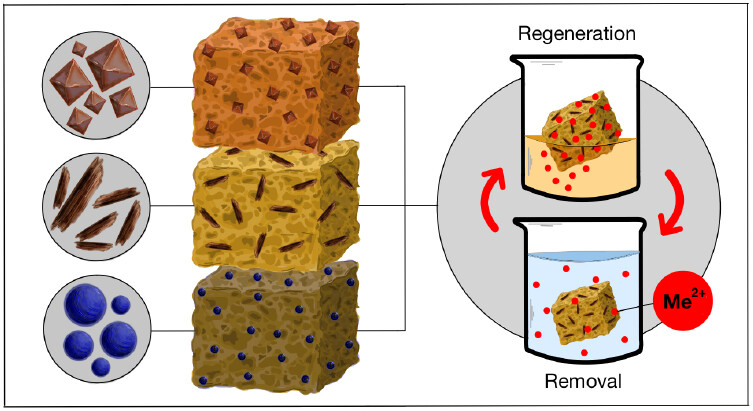Nanomaterial Sponge Coatings for Heavy Metal Remediation and Nutrient Recovery
After the previous successes of my lab group in using sponge nanocomposites for oil spill remediation and nutrient recovery, I worked on designing nanomaterial coatings for mass-produced cellullose sponges to transform them into sorbents for remediating heavy metals and recovering critical elements from aqueous sources. We called this platform approach “Nano-SCHeMe”: Nanomaterial Sponge Coatings for Heavy Metals.
This work was published in ACS ES&T Water and reported on by Fast Company, New Atlas, and Northwestern Now, and presented on at meetings of the American Chemical Society.
Previously, I had worked under lead author, Stephanie Ribet, on the Phosphate Elimination and Recovery Lightweight (PEARL) Membrane, a sustainable solution to the problem of phosphate pollution and hypereutrophication. A cellulose sponge, coated with a nanomaterial slurry, can recover phosphorus, an essential nutrient, from wastewater. Our work was published in PNAS and reported on by Anthropocene, New Atlas, and the Daily Mail.
We more recently continued the testing of the PEARL membrane at larger scales to bridge the gap between lab-scale science and field-scale technology. Working under lead author Kelly Matuszewski, our work on utilizing pH to differentially recover metals and nutrients concurrently from stormwater is published in ES&T Water and reported on by Forbes and the National Science Foundation.
